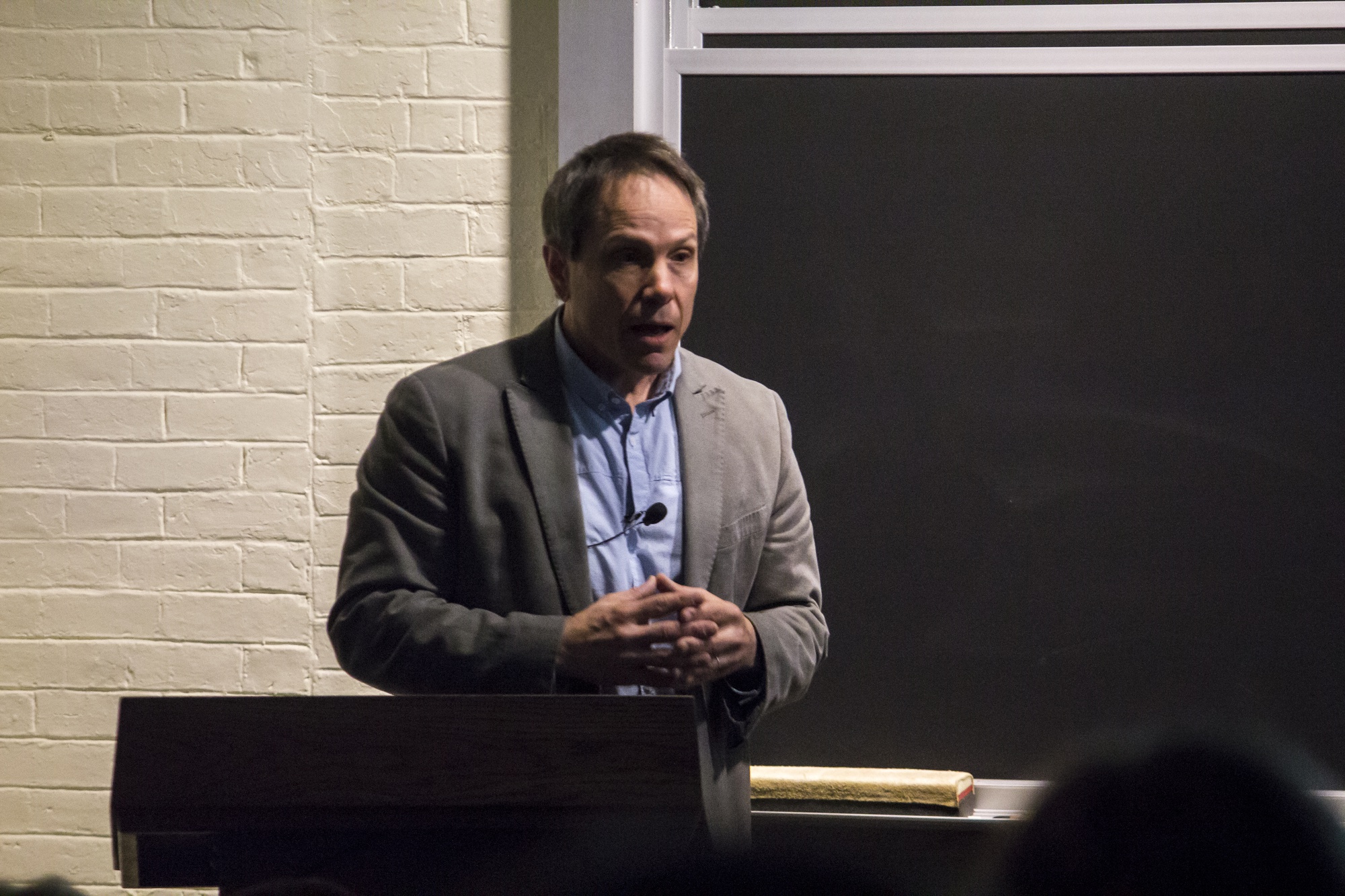
News
Pro-Palestine Encampment Represents First Major Test for Harvard President Alan Garber

News
Israeli PM Benjamin Netanyahu Condemns Antisemitism at U.S. Colleges Amid Encampment at Harvard

News
‘A Joke’: Nikole Hannah-Jones Says Harvard Should Spend More on Legacy of Slavery Initiative

News
Massachusetts ACLU Demands Harvard Reinstate PSC in Letter

News
LIVE UPDATES: Pro-Palestine Protesters Begin Encampment in Harvard Yard
History Professor Discusses Evolution of "Time Reckoning"

History professor Daniel L. Smail discussed his research on the measurement and importance of time throughout history in a lecture entitled “Time Reckonings” Thursday night at the Harvard Museum of Natural History.
“One of the great stories told by history is that of how time came to be,” said Smail, who specializes in early human history. Smail’s lecture coincides with an ongoing exhibit at the Harvard Collection of Historical Scientific Instruments entitled “Time and Time Again.”
According to Smail, all of the world—from the global financial markets to a Harvard classroom—is disciplined by time.
“The way that you think about time inhabits your mind so fully that it’s hard to think of a world without time,” he said.
Referencing numerous objects displayed in the exhibit, Smail traced the evolution of time from the creation of sundials in Egypt and the use of public clocks in Europe to the development of standard time zones in the 19th century.
Smail presented simple questions that depicted the importance of time. For example, how was daily labor compensated before time clocks existed, or how were meeting times arranged when sundials indicated different times depending on one’s location?
Until sundials were phased out for water and sand clocks, Smail said, time was local—noon occurred at different “times” depending on the location of the city.
Another example Smail cited was the practice of Muslim midday prayer a thousand years ago. Due to the relativity of time measured on a sundial, these prayers began at different times across the globe.
“You would hear a wave of prayer moving across at 1,000 miles an hour [the speed of the sun] from east to west,” said Smail.
Finally, Smail also discussed the “clockification of Europe” during the 14th century. The first public clock was built in Paris in 1370, and approximately 80 public clocks were erected in European cities before the end of the century, he said.
Smail attributed this development to merchants’ need to regulate markets, a necessity augmented by the popularity and status associated with clocks during the time period.
“[The lecture] was interesting because it was a social description of time—it is something new,” said Sergio R. Zachir, who attended the event.
“This event is wonderful in that it’s bringing people to hear the story…of objects shown in our exhibition,” said Sara J. Schechner ’79, curator of the Collection of Historical Scientific Instruments.
Jane Pickering, executive director of the Harvard Museums of Science and Culture, echoed the interwoven nature of Smail’s lecture, stating “we try to do programming that...builds off the content of the exhibit.”
The “Time and Time Again” exhibit will remain on display until December 6th at the Harvard Science Center.
Want to keep up with breaking news? Subscribe to our email newsletter.
